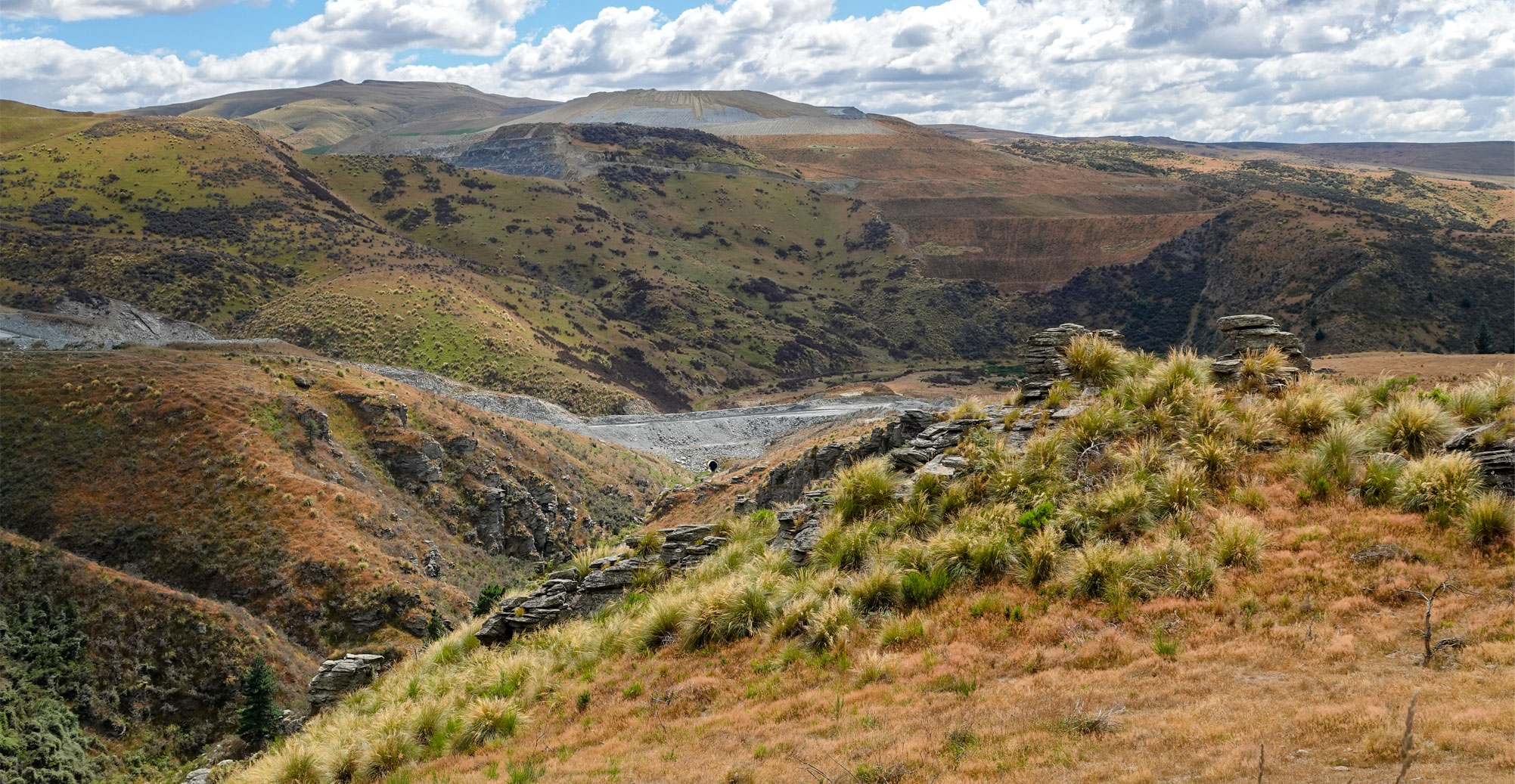
Cycle
By including aspects for closure and rehabilitation early in the mine design process, we can avoid significant environmental impacts (like backfilling mined open pits instead of creating new waste rock stacks) which limits the environmental footprint of our mine.
Rehabilitation
Environmental work at the Macraes Operation involves a range of areas and collaborators, focusing on developing and implementing opportunities that benefit not only the local biodiversity but also the local and wider community. The operation follows the Mitigation Hierarchy (avoid, minimise, restore, offset, and compensate) to manage the effects the mine has on the surrounding environment.

Some of the rehabilitation and closure planning programmes of work undertaken by our team include:
Common Ground Study
The Common Ground study was initiated to find a balance within the Resource Management Act as the Macraes Operation navigated integrated land use and conservation around the mine.
This work involved collaboration with a range of stakeholders and treaty partners to better develop and manage project design on site.
This study helped to identify the concerns and priorities of each group involved and led to a successful mine re-design and development of the Trimbells Waste Rock Stack project.
Trimbells Waste Rock Stack (Mitigation - Avoidance)
The Trimbells Waste Rock Stack re-design was initiated to prevent metalliferous drainage effects.
This involved studying the potential sources and impacts of increased sulphate levels resulting from the oxidisation of exposed (weathered) mineralisation in waste rock stacks and research around the potential impacts on biodiversity.
By redesigning the way, the waste rock stacks were constructed, the Macraes Operation can reduce the weathering that generates sulphate.
Lizard Habitats (Mitigation – Restoration)
In 2018, we commenced a three-year project in partnership with the University of Otago to quantify the effects of constructed lizard habitats (lizard hotels).
The tussock landscape provides the natural environment for native lizards such as the McCann’s Skink (Oligosoma maccanni), Southern Grass Skink (Oligosoma polychroma Clade 5) and Korero Gecko (Woodworthia sp), however, this can be interrupted by pine tree seedlings and other weeds.
The constructed lizard habitats provided the opportunity to not only support the lizard’s current habitats, but extend to new, rehabilitated areas.
Deepdell Culvert
In 2019, the Deepdell Culvert installation was completed at the Macraes Operation.
Designed to manage the effects of aquatic ecology, the 93-metre-long culvert uses baffles to disrupt the water flow and allow aquatic ecology like the Taieri Flathead Galaxiid and eels to move through with ease.
We also undertakes additional conservation actions outside of the mine footprint. This includes sponsorships of the Orokonui Ecosanctuary, which plays an important role in conserving the Haast Tokoeka, the rarest of all kiwi species. This threatened species is at high risk of extinction, with an estimated population of just 400. The operation also supports the Aspiring Biodiversity Trust’s installation of predator control within two key alpine environments of the Makarora catchment.
Read more about our partnerships here.
Closure
A key decision point early in the mine design process is deciding what the final land use for the disrupted land will be. In the 30 years of the Macraes Operation, different land use has been investigated, including displaying heritage artefacts and creating wetland walking tracks.
However, the dominant theme has been to return most of the land to extensive farming land for sheep and cows. Significant effort has since been put into the rehabilitation of mined out areas to create productive farming land.



